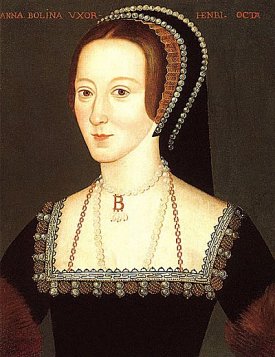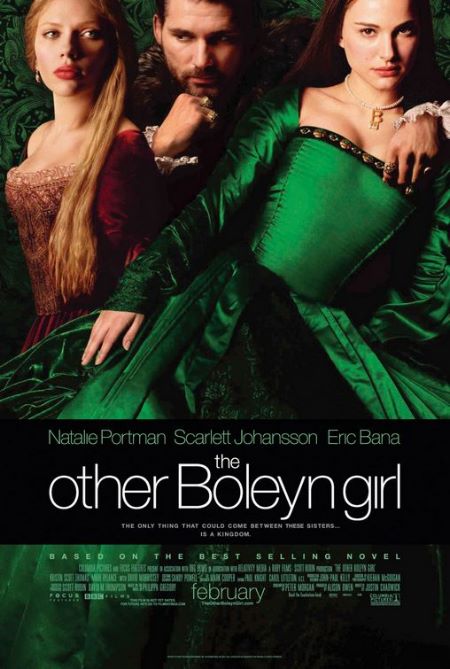In the 2008 movie, "The Other Boleyn Girl," sisters Mary and Anne Tudor are shown in the beginning of the film to be best friends who shared every moment of joy and happiness together. The opening of the movie shows the two sisters chasing and teasing each other in an open field of grass. We begin to see sibling rivalry when the two sisters sought after the same man, King Henry VIII. However, the film closes with the two sisters reunited spiritually, because the movie shows the audience that bitterness and contempt can never erase the bond sisters are born with.
While the movie deserves praise for realistic depiction of certain church scenes, scenes of birth giving, and the type of clothing for the time setting, many historians found it hard to accurately recreate events that were not documented.
Some of the inaccuracies in this movie included events that did not follow chronological order on the timeline, made-up scenarios and a failure of including important people who were involved in the drama between Anne, Mary and Henry.
The movie shows Mary and Anne as two girls from the countryside. Though it was mentioned in the movie that Thomas Boleyn, the girls' father was some-
 what ranked in royalty, as far as the audience can see, Mary and Anne were two simple girls who stayed in the countryside. However, this was untrue because Mary used to travel to France with Henry's sister, Mary. Mary Tudor was exposed to royalty quite often when she attended parties in France. In fact, Mary and Henry met through Henry's sister, despite the fact that the film showed Mary and Anne's first encounter with Henry at the Tudor's residence.
what ranked in royalty, as far as the audience can see, Mary and Anne were two simple girls who stayed in the countryside. However, this was untrue because Mary used to travel to France with Henry's sister, Mary. Mary Tudor was exposed to royalty quite often when she attended parties in France. In fact, Mary and Henry met through Henry's sister, despite the fact that the film showed Mary and Anne's first encounter with Henry at the Tudor's residence.Mary is shown as the older sister of Anne, but historians say that Mary may be the older of the two, but not more than 12 months. Regardless, Henry did fall in love with Mary the moment he set eyes on her, as shown in the film. At the time when Henry was courting Mary, she was
 already married to William Carey, man with no land, no money and had no connection to royalty. Carey eventually became Henry's good friend, which was left out of the movie's storyline. Henry did eventually have an affair with Mary that Carey was aware of.
already married to William Carey, man with no land, no money and had no connection to royalty. Carey eventually became Henry's good friend, which was left out of the movie's storyline. Henry did eventually have an affair with Mary that Carey was aware of.Mary's second pregnancy was said to be the bastard son of the King. In the movie, the event of the child birth was taken place in the King's palace. However, the real setting of the birth is unknown. It could have been somewhere in the palace, but not in the chambers next to the King's bedroom as shown in the film. Mary and Henry's affair was also over by the time Mary gave birth to her son, Henry Carey. By the time Henry Carey was born, Henry had already lose interest in the older Boleyn daughter and had his eyes set on Anne.
The movie portrayed Anne just as historians had described her to be. Anne had no intentions of being a mistress to the King, instead, she wanted to be the Queen of England. Henry continued to chase after her for years until he asked her to be his wife. With Anne's royalty status as the most powerful woman in England, her father, Thomas Boleyn was knighted Earl of Wiltshire, her brother, George, became Viscount Rochford while Mary, the mother of Henry's alleged bastard son, was nothing and never received the respect she deserved for bearing the King's son.
It was not out of the ordinary that Mary was treated as no one in the royal family. Henry previously had an affair with Bessie Blount before he met Mary. Blount's son, Henry Fitzroy, was said to be Henry's illegitimate son as well. Blount, like Mary, was never honored for giving the King a son. Witnessing her sister out casted from the royal family, Anne knew the downfall would happen to her as well and never agreed to anything less than owing the queen of England's crowd.
Henry eventually grew tired of Anne and wanted someone more quiet and docile by his side. The courts convinced him the only way to get rid of Anne was to accuse her of something treasonous. Henry eventually accused Anne of adultery, something that was believed to be made-up. Anne was charged with committing adultery with six men, one of them being her own brother, George.
 Audiences were not given the chance of seeing Anne's innocence. The film depicted Anne's crime as a fact when some believed otherwise. A testimonial given by Lady Rochford, George's wife, was not shown in the movie. It would have made a compelling case had she been included in the movie because she had testified against George, stating that she knew he was having sexual relations with his sister. However, Lady Rochford was known to have hated both her husband and Anne, therefore, making her testimonial questionable.
Audiences were not given the chance of seeing Anne's innocence. The film depicted Anne's crime as a fact when some believed otherwise. A testimonial given by Lady Rochford, George's wife, was not shown in the movie. It would have made a compelling case had she been included in the movie because she had testified against George, stating that she knew he was having sexual relations with his sister. However, Lady Rochford was known to have hated both her husband and Anne, therefore, making her testimonial questionable.Anne was found guilty of committing treason against the country and the King. The movie showed Mary gazing at her sister from a large crowd as Anne was facing the last minutes of her life. This was fiction and it has never been confirmed whether Mary witnessed her sister's execution. Because of Anne's broken promise to Henry that she would deliver a son and Henry's wandering eyes on other women, Anne Boleyn was executed in 1536.

No doubt that this movie left a lasting impression. The audience got a small glimpse of what life was like as a royal member and the drama that happened behind closed doors. Through thick and thin, Mary and Anne remained to love one another because of the sisterhood that could not be broken. Whether Mary was present in Anne's last minute on earth might have been questionable, but historians said that the sisterly love the Boleyn girls had for each other remained throughout the drama and betrayal.
Photographs courtesy of assets1.indy.com, clashofthetitans.files.wordpress.com, tudorhistory.org, englishhistory.net and bbc.co.uk.
